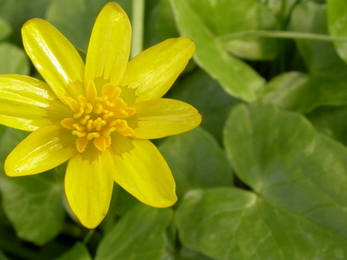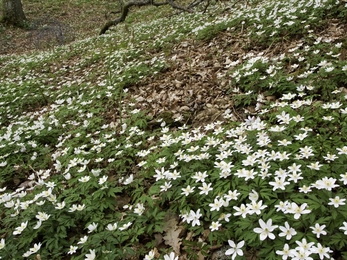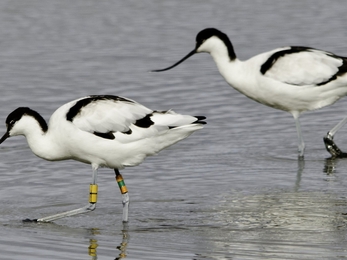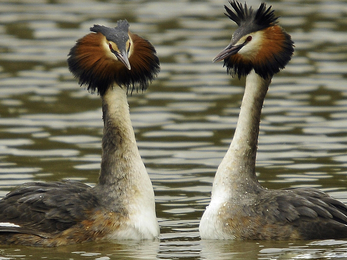Llynclys Common bluebells (c) Sarah Gibson
Shropshire in Spring
MARCH, APRIL AND MAY
Spring is a time of resurgence, and each new sign of the season’s progress lifts the heart.
Days get longer and warmer and green shoots push through the soil. Animals wake up from their winter slumber and with the sound of buzzing insects filling the air there is lots to celebrate this season with nature at its busiest.
Often the earliest wakenings are the spring flowers –watch out for the discrete flowers of dog’s mercury. This common woodland plant is also frequent in hedges, and puts out its small, inconspicuous green flowers very early in spring. Following close on its heels are the bright yellow lesser celandines, creamy yellow primroses, dainty violets and delicate white wood anemones. These are typically woodland flowers, which need to get their flowering and seeding done before the leaf canopy thickens.
Wild garlic at Bwlytai Wood Nature Reserve
Later in spring, bluebells fill the woods with their haze of blue flowers and evocative scent. Less delicately scented is the wild garlic or ransoms, forming carpets of starry white flowers in damper places – this one offers the first really good foraging opportunity of the year with the leaves and flower buds adding a garlicky pungency to soups, risottos and omelettes.
Do be careful with identification though – the leaves look similar to the poisonous lily of the valley. The smell of garlic should tell you when you’ve found the right one! Look out for spring flowers in any of our woodland reserves or along local country lanes.
The woodlands are also coming alive with bird song. Spring is the time of year to get out early and enjoy the dawn chorus, as our resident birds are joined by migrants and all are claiming their own bit of territory for the breeding season. Even if you can’t identify each singer it’s a glorious experience.
Get your ears tuned to your garden residents such as great tits, robins, blackbirds, dunnocks and chirping sparrows, and then listen out for new arrivals.
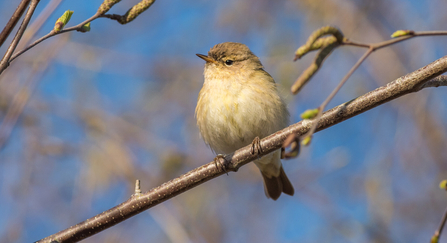
Ciffchaff (c) Janet Packham Photography
The first is likely to be a chiffchaff with its rather monotonous two-note song, as this little warbler winters in southern Europe. Most of those coming from Africa take a little longer on the trip, but wheatears are another early arrival – Catherton Common and the Stiperstones reserves are good places to see them.
Slightly later in Spring warblers such as blackcaps, wood warblers and pied flycatchers can be found at Craig Sychtyn, Earl’s Hill and Clunton Coppice Nature Reserves. Look for cuckoos at Brook Vessons and our only migrant falcon, the hobby, on the Mosses in North Shropshire. Read more about birds at the Mosses here.
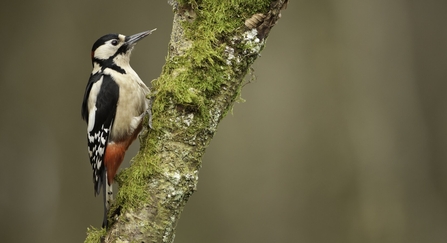
Great spotted woodpecker (c) Mark Hamblin/2020VISION
Woodpeckers have a different way of declaring their territories, drumming on dead branches (and even telegraph poles) to announce their presence.
This gives you a chance to see the scarce, sparrow-sized lesser spotted woodpecker – learn the difference between the drum rolls of the greater and lesser spotted woodpeckers, and when you hear one, try mimicking it by tapping with a stick on a hollow tree. There’s a good chance the woodpecker will come to check out a potential rival.
Great spotted woodpeckers are widespread in the county, but it’s worth trying The Ercall and Wrekin or Wenlock Edge for lesser spotted's.
Passage migrants add a little spice to spring birdwatching – a huge variety of waders have been recorded at Wood Lane Nature Reserve, including avocet, ruff, sandpipers and godwits. Passage birds are never predictable, but it’s well worth a trip to local wetlands to see what turns up!
A real spring spectacular is the courtship display of great crested grebes. These glorious waterbirds are in their full finery now, and from February onwards pairs can be seen ‘dancing’ with beaks full of water-weeds. Again, Wood Lane is a great place to see them, but any large piece of open water is worth checking.
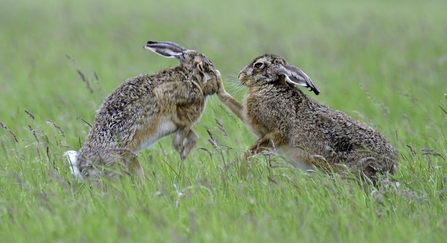
European Hare (c) Andy Rouse/2020VISION
Boxing hares are another spring speciality. They are usually females (does) repulsing the unwanted attentions of eager males (bucks). Several bucks may congregate around a doe, and can be seen behaving as ‘mad march hares’, chasing in circles.
Arable land is often the best place to see them, as the crop will be short and the hares quite visible.
Don’t forget to keep an eye on your own garden or local park. The first butterflies, small tortoiseshells, red admirals, peacocks and brimstones, on the wing having overwintered as adults, and they’ll soon be joined by others. Pearl bordered fritillaries can emerge as early as late April, when a walk on Llynclys Common or Jones’ Rough could reward you with a sighting.
Click here for further information on British butterflies
Keep an eye out for early bumble bees too. The first of the season are queens, which will be patrolling in search of suitable nest sites to start their broods. For a much rarer bumblebee, take a trip to the Stiperstones to see if you can spot a bilberry bumblebee with its glorious fuzzy red bottom.
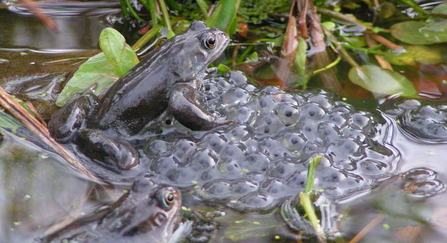
Common frog and spawn (c) Richard Burkmar
Spring blogs
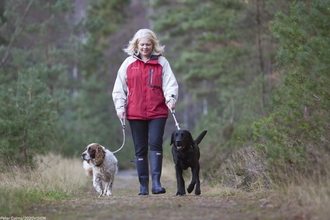
Paws for thought!
We talk to nature and dog-lovers from Dogs Trust and Natural England to find out how they enjoy wild spaces with the needs of their four…
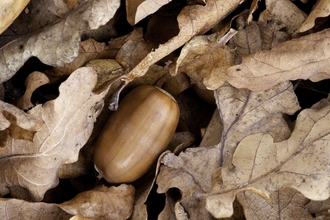
Dr Cath's Nature Notes - May 2023
May is the month of spring in its full glory, and there’s nowhere better to experience the fresh transient beauty of the season than in…
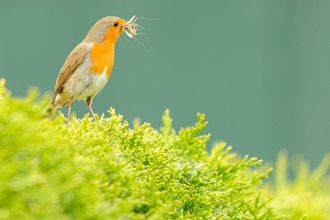
Breeding birds in your garden – who does all the work?
All that work, claiming and holding a territory, building a nest, brooding and defending a clutch of eggs, feeding a hungry nestful of…
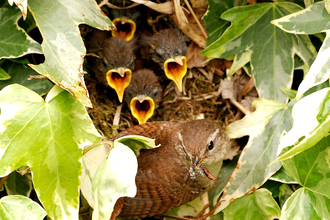
Dr Cath's Nature Notes - April 2023
It’s a busy time of year for our garden birds. Territories are being claimed and nests are being built. Birds become much more visible…
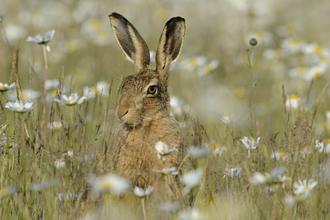
Dr Cath's Nature Notes - March 2023
If you’re looking for a creature associated with March, it has to be a hare. There is something very special about hares. If you think…
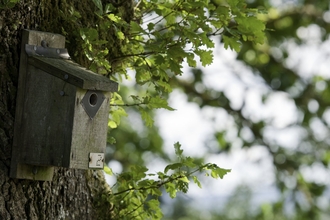
National Nest Box Week
Many birds will use nest boxes – but which one should you choose for your garden?

